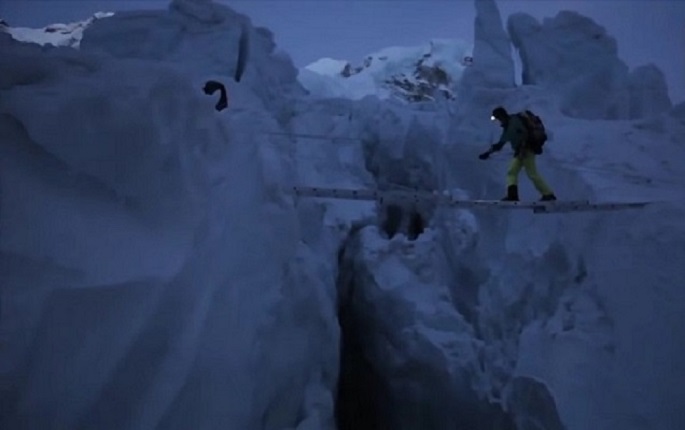Looks like the steep slopes of the highest mountain in the world are not the only ones that challenge the most determined climbers in the planet but also the steep price that comes with it.
Yes, nowadays, conquering Mt. Qomolangma doesn’t only require one to have a solid climbing experience and tons of willpower. Having a fat bank account would prove to be crucial, too.
It is the financial aspects of the climb that most likely hinder hikers to scale the famed mountain, reported SINA English.
Hikers need approximately 330,000-400,000 yuan ($50,000-$60,700) to cover miscellaneous expenses, according to the lone Chinese company authorized to provide a guide service for Mt. Qomolangma climbers.
Such huge amount of money will go to climbing clothing, footwear and gear; guiding fees and other pertinent fees; insurance and for the overall travel cost.
More commonly known, particularly among Westerners, as Mt. Everest, the once unconquerable “roof of the world” mightily stands 29,035 feet (8,848 meters) above sea level.
Sitting on a mountain range that expands between Nepal and Tibet, the Tibetans refer to the mountain as “Qomolangma” (“Chomolungma”) while the Nepalese call it “Sagarmatha.”
“Qomolangma” translates to “Goddess Mother of the World,” “Goddess of Mountain” or “Goddess of the Valley” in Tibetan. “Sagarmatha” literally means “Ocean Mother” in Sanskrit.
The Chinese uses the Pinyin name “Zhumulangma Feng.”
Colonel Sir George Everest (1790-1866) mapped the peak of the mountain in 1852, which was eventually named Peak XV. The British geodesist served as Surveyor-General of India from 1830-1843.
The U.K.-based Royal Geographical Society decided in 1865 to adopt the name Mount Everest in honor of the colonel.
Everest opposed in 1857 the idea of naming the mountain after him, according to the website, Mt. Everest - The British Story.
The website said that Everest told the society that the people of India “could not pronounce it (his surname)” and “Mount Everest could not be written in Hindi.”
Nepalese officials told the media that it would ban “inexperienced climbers” from ascending the mountain, reported The Independent on Oct. 2, 2015.
According to the report, many seasoned mountaineers expressed their support to the proposed ban, but they still “have mixed feelings” about it.
Upon approval, one can only obtain a permit to scale Mt. Qomolangma if he or she already experienced climbing “mountains higher than 6,500 meters.” The mountain will be off-limits for the “disabled, old and very young people.”
Veteran climbers must also have deep pockets because the necessary permits “cost thousands of dollars,” according to the Guardian.
Throughout the years many have perished climbing Mt. Qomolangma.
From 1921-2006, 212 died, according to About.com. The website said that most of them were “generally physically fit.”
Deaths are usually attributed to avalanche, altitude sickness or acute mountain sickness (AMS), hypothermia, and even to safety-gear issues and excessive fatigue.



























